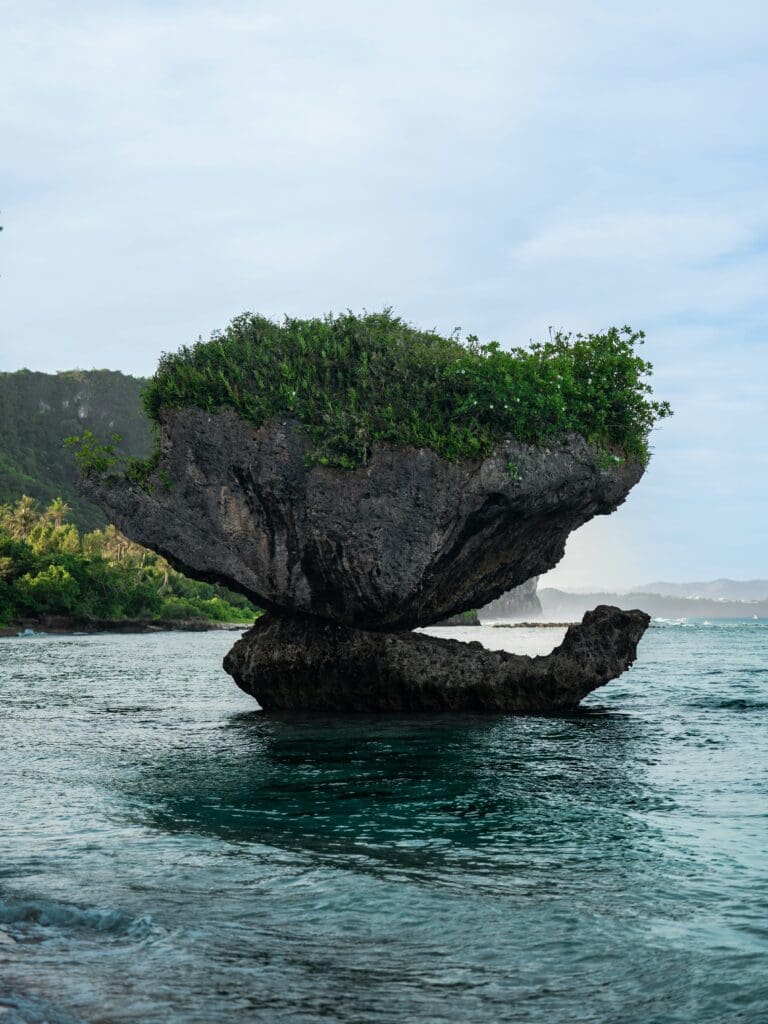
A Pacific Island with Heart, History, and Håfa Adai Spirit
Guam is a small island with a big personality. Nestled in the Western Pacific, this island is the southernmost and largest of the Mariana Islands and an unincorporated territory of the United States. But if you’re thinking “just another island,” think again.
Guam is a blend of ancient culture, colonized history, and island pride. It’s where latte stones rise from the ground as reminders of our ancestors, where family BBQs happen on the regular, and where the sun always sets a little softer. For those who’ve never heard of Guam (or have only seen it mentioned on a map in high school geography), this is your warm welcome! And for those who are from here, it’s a reminder of why there’s truly no place like it.
A Deep and Complex History (Short Version)
The CHamoru people have lived on Guam for over 4,000 years, with deep roots in seafaring, family, and respect for the land. But like many islands, Guam’s story was changed by colonization.
Spain claimed the island in the 1600s, the U.S. took over in 1898, and Japan occupied it during World War II. Guam returned to U.S. control in 1944 and remains a U.S. territory today, which means we’re American citizens, but we don’t have a vote for president and our representation in Congress doesn’t get a vote either.
This history shaped the island, but it didn’t break us. The CHamoru spirit is still alive in our language, our faith, our food, and the way we show up for one another.
Want the full story? [Click here for the deeper dive into Guam’s history.]
A Place Where the Past Lives On
Culture isn’t just preserved here, it’s practiced. From latte stones and ancient chants to rosaries and fiesta tables, Guam is a place where tradition is part of the rhythm of daily life.
Guam is rich in culture and history, shaped by thousands of years of Indigenous CHamoru traditions and layered with influences from Spanish, Japanese, and American colonization. From ancient latte stones to World War II bunkers, the island is dotted with reminders of resilience.
Nature, Beauty, and a Slower Pace
This isn’t your average island vacation vibe. We’re talking cliffside views, jungle hikes, waterfalls, and beaches with water so clear it feels unreal.
Guam is a place where you can chase waterfalls in the morning and snorkel alongside sea turtles by afternoon. Life moves slower here, and that’s exactly how we like it.
A Unique Blend of Cultures
While CHamoru culture is the soul of the island, our community is beautifully diverse. You’ll find a vibrant blend of Filipino, Japanese, Korean, Micronesian, and American influences (to name a few) across generations. This mix is reflected in our festivals, our families, our food, and even the way we speak.
More Than a Destination
For some, Guam is just a dot on the map or a military duty station. But for us, it’s where memories are made and roots run deep. There’s No Place Like Guam isn’t just a catchy name. It’s the way this island wraps around you and stays with you, long after you’ve left.
If you’re still wondering what Guam really is, it’s family, faith, food, and that feeling you get when you’re exactly where you’re meant to be.
Guam At A Glance
Location: Western Pacific Ocean, part of Micronesia
Size: About 30 miles long, 4 to 12 miles wide
Population: Around 170,000
Indigenous People: CHamorus
National Languages: CHamoru and English
Political Status: Unincorporated U.S. Territory
Capital: Hagåtña
Currency: U.S. Dollar
Time Zone: Chamorro Standard Time (CST), UTC +10
National Flower: Puti Tai Nobiu (Bougainvillea)
National Bird: Ko’ko’ (Guam Rail: once extinct in the wild, now coming back strong)
National Tree: Ifit
🎉 Fun + Fascinating Facts About Guam
- We’re where America’s day begins. Because of our time zone, Guam is one of the first U.S. jurisdictions to greet the new day and the New Year.
- Fiesta culture is serious business. In Chamorro culture, each village has a patron saint, and annual fiestas are big, vibrant community events with open-invitation.
- Island time is a real thing. We drive on the right side of the road, but life is all about slowing down. If you’re in a rush, Guam might lovingly humble you.
- WWII left a mark. Guam is the only U.S. soil occupied by enemy forces during World War II. Liberation Day on July 21 is a huge celebration of resilience and remembrance.
- Latte stones aren’t coffee related. These stone pillars were used as foundations for ancient Chamorro homes. Today, they’re powerful symbols of strength, heritage, and identity.
- The ocean is our backyard. Guam has some of the best diving in the world, with WWII wrecks, coral reefs, and clear-blue waters that never get old.